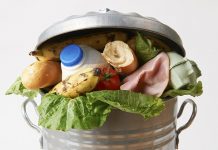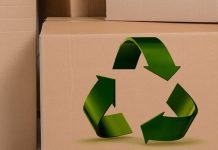Packaging, an integral part of our daily lives, offers convenience and minimizes food waste at a low cost. However, it also imposes a substantial environmental burden due to low recycling rates in the United States. This concern has prompted consumers worldwide to focus more on packaging waste and its impact on the environment. As a response, brand owners and the packaging industry have made ambitious commitments to enhance the sustainability of their packaging by increasing recyclability and recycled content.
This increased demand for recycled materials has created a green price premium, mainly due to a shortage of supply. To address this issue, we delve into the recycled polyethylene terephthalate (rPET) value chain, aiming to understand the root causes of the anticipated supply-and-demand imbalance. We also propose approaches to alleviate this issue, which can be adapted to other packaging substrates facing similar market pressures like glass, metal, paper, and flexible packaging.
A diverse range of end-use applications relies on the PET waste stream, including textiles, plastic films, strapping, and food and beverage bottles. However, only about 27 percent of PET bottles and 18 percent of all recyclable PET plastic waste are currently collected, with the rest ending up in landfills. Over the past decade, there hasn’t been a significant increase in PET collection or sorting, resulting in a mere 1 percent annual growth in rPET supply in North America. This leads to approximately 4.6 billion pounds of PET ending up in landfills annually, representing a significant untapped opportunity for food-grade PET recycling.
The future supply-and-demand scenario for rPET is expected to worsen due to rapidly growing demand and stagnant supply. If brands are committed to meeting their recycled-content targets by 2030, demand for rPET is projected to rise by 15 percent annually between 2022 and 2030, while supply is expected to grow by only 1 percent during the same period, creating a threefold demand-supply gap by 2030.
Furthermore, as sustainability becomes a driving force, the use of rPET driven by environmental, social, and governance (ESG) factors will expand its market share. This could lead to increasing price premiums as the demand for rPET continues to grow. Additionally, many brand owners are considering shifting from other plastic resins to rPET due to its higher recyclability and perceived accessibility.
To improve the availability of recycled materials, packaging industry leaders can adopt three key strategies: boosting supply, ensuring access, and designing for circularity. These strategies can be customized based on local policies, manufacturing plant locations, and sources of rPET supply.
Boost Supply: Approximately 80 percent of PET waste remains unused, offering opportunities across the value chain to enhance PET recovery. Public-private partnerships can be formed to increase local collection rates in underfunded or underserved areas. Investing in advanced sorting equipment at material recovery facilities is another avenue to increase rPET supply. National and state-level policies, such as extended producer responsibility or deposit-return schemes, have proven effective in some countries.
Ensure Access: Securing access to rPET will become crucial for brands committed to meeting recycled content goals as rPET becomes scarcer. Companies can explore options like vertical integration with recyclers, long-term partnerships with suppliers or competitors, and direct bottle recovery from consumers.
Design for Circularity: Brands can expedite their journey to circularity by improving packaging design to ensure materials are recovered from the waste stream. This may involve transitioning away from colored PET and enhancing labeling and product design to encourage higher consumer recycling rates.
These enablers are not exclusive to rPET but can also be applied to other substrates in the broader packaging market, including paper, metal, glass, and flexible packaging. These measures can help the packaging industry align with sustainability goals in a time-sensitive manner, with multiple ambitious sustainability commitments scheduled for 2025 rapidly approaching.























